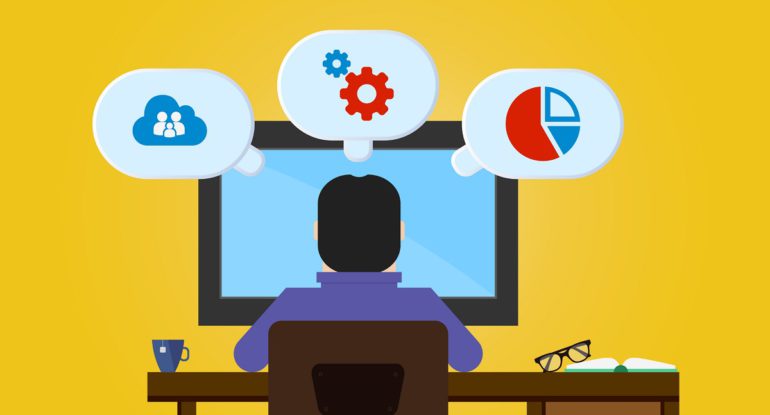The Scope of IoT Product Development in Web 3.0

Just like all things around, the internet too underwent an evolution. From reading text on a static website to this date when there’s an army of devices communicating themselves, it’s been a beautiful journey broadly divided into eras. At this time, we are in the Web 3.0 era wherein devices are self-governed and set the narrative of quite a few processes for humans. It is exhilarating. It is the future. After all, we are talking about devices that are billions in number.
An industry wherein projects worth USD 1.1 Trillion are at stake till 2023, it is ought to redefine our future. The craze around IoT is at its all-time peak. Everybody from individuals to enterprises wants to regale the opportunity and stay ahead in their league.
Web 3.0: What is it?
Web 3.0 allows computers as well as small internet-connected devices to interpret data as intelligently as humans. And how does this happen? Instead of storing information in centralized repositories, it connects data in a decentralized manner. Because of this, both machines and users can work seamlessly with the available data.
While hiring your IoT product development partner, the greater responsibility is to build systems that stay in compliance with the ethos of an emerging web era. And to ensure that, they ought to unlearn and relearn everything about data ownership and the architecture of our internet of things. It’s time to decentralize the ecosystem wherein every node of the network takes charge of the data ownership and its streaming while the central repository manages core admin policies of the entire network.
Next, it is the optimal implementation of AI to produce a self-governed, powerful and fast ecosystem. To put it simply, device communication with minimum dependency on manual inputs is the objective. Given such a scale, hiring the best tech partner can be cumbersome. If you are new to the domain, I firmly recommend approaching a marketplace to find the best talent. Ioterra and AT&T are a good pick. These platforms feature skilled resources for all disciplines of IoT and for all product types. Engineers, designers, prototyping experts, business analysts, etc dedicated to IoT have published works on the platform. While we are at it, the platform lists AI and blockchain professionals who have worked in IoT projects.
There’s ‘IoTmarketplace’ that provides software professionals in multiple domains. AT&T’s marketplace is popular for providing end-to-end deployment of IoT projects on its platform.
Edge Computing
Edge computing has helped us get the most out of this huge amount of data that comes out of connected IoT devices. All you need to do is deploy machine learning models and analytical algorithms to let edge process information locally.
This can help product owners make decisions rapidly on real-time user data. Another benefit of edge computing is that it makes sure that data is aggregated before it is sent to a central server for long-term storage and processing.
This protocol allows new users to process information and large amounts of data in real-time instead of getting into problems because of transmission delays or bandwidth costs. IoT has allowed us to enable computing power on a device or data source that is physically there.
IoT sensors and devices produce data by analyzing it at the edge instead of sending it back to a central server. This cuts down the time significantly and gives users a faster product experience.
Also, read – 9 ways to buy bitcoin anonymously
Blockchain & IoT to make Web 3.0 possible
Semantic blockchain technology has made it possible to store and inter-connect information in a safe way. This tech uses a decentralized ledger of apps [known as dApps] which allows applications to run on their own without having the need to require a central server.
In a way, IoT permits smart devices across the web to send data to private blockchain hubs or networks. You can thus make records of shared transactions tamper-resistant. For example, the IBM blockchain allows its business partners to access and share their data without having the need for any management or central control. All the transactions made can be easily verified. This helps the organization build trust and prevent any disputes among their network members.
A few tips to help you along the way:
- Easily streamline processes that allow you to add more value to your business ecosystem by using the data provided by IoT sensors and devices.
- Track components that go in major products such as automobiles and aircraft easily to ensure regulatory and safety compliances. The data is stored in blockchain ledgers and allows all related parties to access this information and also check the component provenance as long as the product exists. You can easily access this information on the blockchain and share it with manufacturers, shippers, etc in an easy, safe and economical way.
- Blockchain now gives you a tamper-free ledger of both the operational work data and the resulting maintenance as well. These devices track how safe critical machines are and also inform us about their maintenance status. You can also share these operational records with government officials securely in case the need arises.
Final Thoughts
To extract optimal value from decentralization, IoT enterprises have a great leap to cover. It is not incorrect to say that the future relies on the confluence of decentralized (blockchain) and device-driven (IoT). Lesson learned? Brainstorm solutions backed by heterogeneous technologies – they combine together and make Web3.0 possible.
You can also read: The future of crypto tokens and beyond




























































